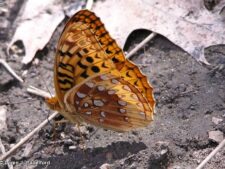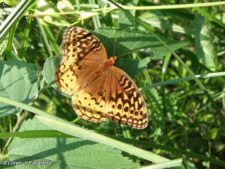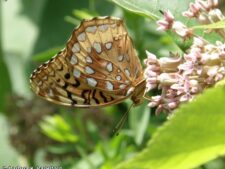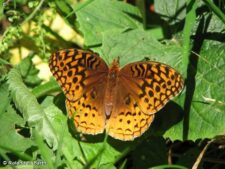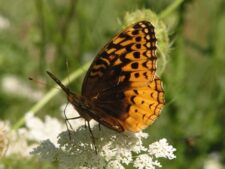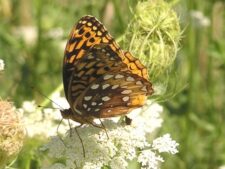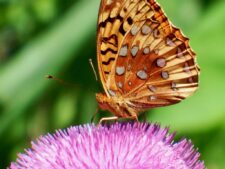
The wingspan of this fritillary is approximately 2 – 3 inches. Dorsally, it is orange with many bold, dark markings on the forewing and lighter, dark marks on the hindwing. Females are darker near the base of the wings. Ventrally, it is orange with tannish markings on the outside corner and darker marks towards the base. On the hindwing, the marginal band is tan, the wide submarginal band is cream-colored and the remainder is rust colored. The hindwing is superimposed with showy, silvery spots, hence the name, Great Spangled Fritillary. The mature caterpillar is 2 1/4 inches long. It is black with branching black spines which are orange at the base. The head is orange above and black below.
This is the most common fritillary in this area, although they are never present in large numbers. They can be found in summer nectaring on thistles, milkweed and mints, and also mineralizing on damp soil.
Females mate in June or July and seemingly disappear until fall when they lay their eggs near violets, the larval hostplant. The first instars hatch 2 – 3 weeks later, but do not feed for 7 – 8 months until the new violet leaves emerge the following spring. Few larvae survive the winter, but this is compensated for by the large number of eggs laid (up to 2,000 per individual). The caterpillars are secretive, ground-dwelling and feed at night.
Disclaimer: The content of NatureSearch is provided by dedicated volunteer Naturalists of Fontenelle Forest who strive to provide the most accurate information available. Contributors of the images retain their copyrights. The point of contact for this page is: Babs Padelford.

